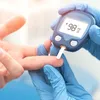5 ways to boost your oxygen level during the pandemic
From consuming iron-rich foods and including a diet with fibre-rich foods to being well hydrated can help maintain a good oxygen level.
Oxygen levels have been discussed a lot during this pandemic. Several people with COVID-19 have challenges when blood oxygen levels drop very low.
Now what are blood oxygen levels? This refers to just how much oxygen your red blood cells are carrying. Typically, this is not something that everyone needs to observe all the time, but during the pandemic, it might be important to support your body to ensure that you protect yourself in maintaining optimal oxygen levels.
When oxygen levels fall very low, your body may struggle with symptoms like palpitations, confusion, dizziness, shallow breathing, pressure in the head or headaches.

Ways to boost your oxygen level
Red blood cells are an important marker. It is hard for the body to do any healing if they are affected. Oxygen levels can become a critical aspect if someone does test positive. There are several aspects to look at while you are healthy so that you can ensure higher chances of safety for yourself and for your loved ones.
Avoid being iron deficient
Ferritin is the storage form of iron and is one of the most accurate ways to measure iron levels. Low levels of ferritin shows iron storage disruption. This causes low haemoglobin – the oxygen carrying component of the red blood cells. It is alarming how many people are deficient and those at high risk for low levels are menstruating women, vegans, and vegetarians who are not conscious of how to get their levels higher and those who are taking antacids regularly.
The use of antacids cause a drop in stomach acid levels preventing absorption or utilisation of iron even if you have ample dietary sources. This causes a drop in oxygen levels in the blood. During these challenging times that we are in, please do make it a priority to observe ferritin levels to ensure that your body is not at higher risk for oxygen level drop.
Include foods that help with circulation
Nitrates are compounds that relax blood vessels and can increase oxygen supply throughout your body. These are found in beetroot, garlic, leafy greens, pomegranate, cruciferous vegetables, sprouts, meat, nuts, and seeds. These foods help the body with circulation of blood throughout the vascular system. Your body also needs foods rich in folate and B12 to form heme iron, which is the oxygen carrying part of your blood. Ensure that you are eating a diverse diet with plenty of fibre rich colorful plant foods. The more you can include the better, as the antioxidant boost can also help with vascular movement and oxygenation.

Learn to breathe correctly
Your lungs play a key role in maintaining oxygen levels. Your lungs have a residual volume of air that is always required to keep the lungs inflated. But if you have developed a pattern of shallow breathing, then what happens is that you always end up breathing out inadequately. This causes the residual volume to increase and prevents oxygenation from every breath in. These patterns of suboptimal breathing occur due to two reasons.
The first is that you might not be using your diaphragm.
Your diaphragm is a muscle that sits below your lungs separating the rib cage from the abdomen. When you consciously balloon your abdomen, you create a vacuum in the chest, which allows your lungs to fill completely. If you breathe by expanding your rib cage instead you never breathe optimally.

The second reason is mouth breathing. This is common when you work out, when you sleep, or even through the day. Mouth breathing reduces nitric oxide and that reduces oxygen levels. Ask your family member or friend to observe you in sleep. If you are someone who breathes from the mouth, learn about mouth taping from a professional. Overall, it might be advisable to relearn breathing. There are several people, even those who practice yoga long term, who still breathe poorly.
Get moving
Given that work has shifted to remote for so many, being sedentary has also gone up. Prioritise the time you would have spent commuting in exercise. It is normal to get breathless when exercising and oxygen consumption does increase. But this is also how you improve lung function and oxygenation overall.
Exercises combined with conscious breath work the right way goes a long way in boosting oxygen levels. Focus on the right method of breathing from someone trained in it versus someone who simply advises you to breathe in and out through your mouth. Mouth breathing while exercising also activates the sympathetic nervous system. That can leave you in a state of higher inflammation and more susceptible to a weak immune system. Push yourself to include different forms of exercise, pushing your boundaries slowly but surely, in combination with the right breathing.

Hydration
Your body is 60-70 percent water. It is so deeply connected with oxygenation and energy production. You need water in several metabolic functions, to lubricate joints, effectively eliminate toxins, regulate your body temperature and support optimal functioning of practically every system. It is noticeable that several health-conscious people still consume very little water.
Lack of adequate hydration causes stagnation in the lymphatic system. This can weaken the immune system, impacting energy and also predisposing you towards infections. That is the last thing you need during these troubled times. This is such a cost-effective way of supporting you. Begin to improve your hydration today!
These are the five steps towards becoming empowered and more aware of your oxygen levels. Maybe the times we are in are alarming, but take steps every single day to empower yourself and support your body through these challenging times.
Edited by Megha Reddy









